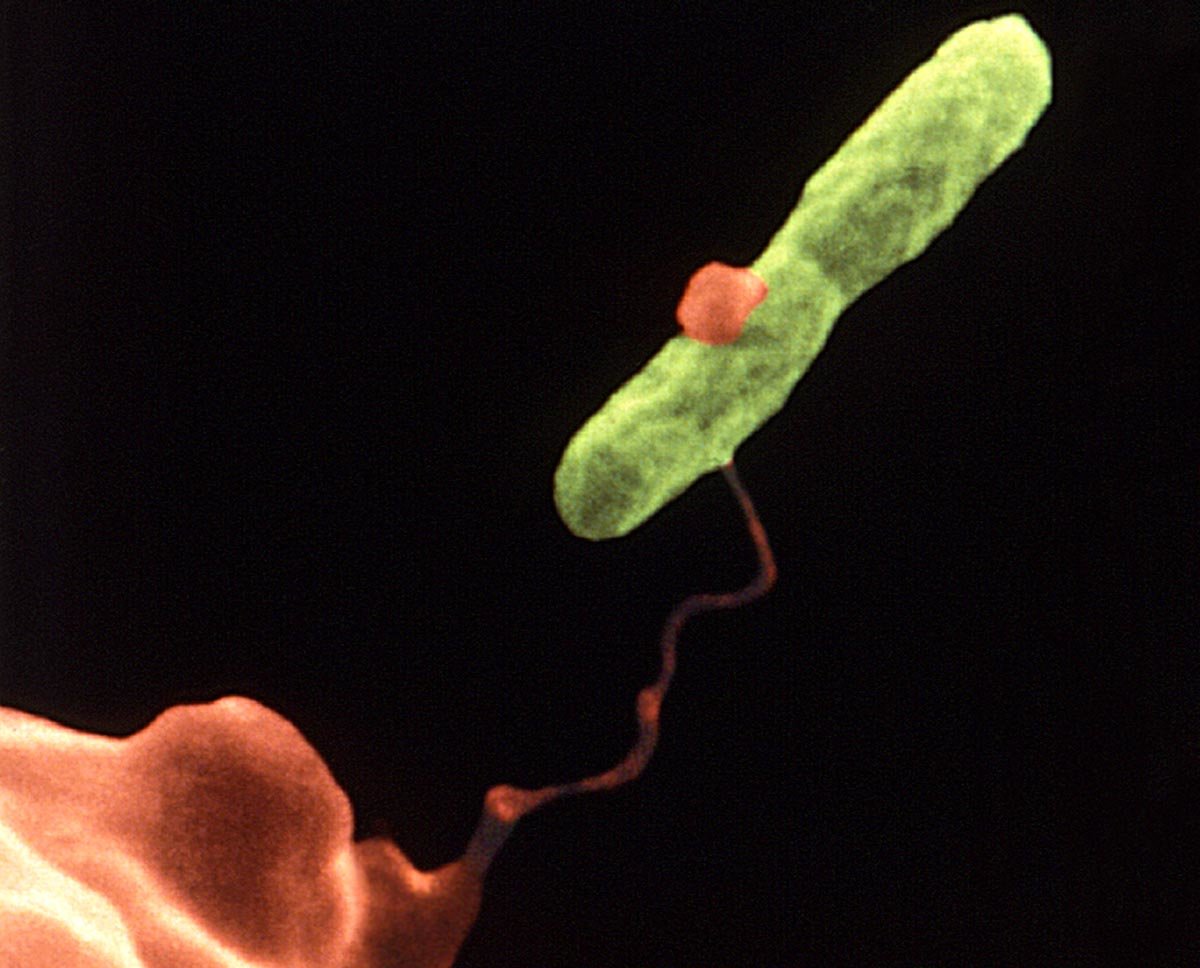Contaminated Drinking Water: Millions Of Americans At Risk, Report Reveals

Table of Contents
Sources of Drinking Water Contamination in the US
The contamination of drinking water sources in the United States stems from a variety of factors, posing a significant threat to public health. Understanding these sources is crucial to developing effective mitigation strategies.
Lead Contamination in Old Pipes
Lead pipes, prevalent in older infrastructure across the US, are a primary source of lead contamination in drinking water. The corrosion of these pipes releases lead into the water supply, posing a severe health risk, especially to children and pregnant women.
- Health Effects of Lead Poisoning: Lead poisoning can cause developmental delays, learning disabilities, behavioral problems, and neurological damage in children. In adults, it can lead to cardiovascular problems, kidney damage, and reproductive issues.
- Statistics on Affected Areas: Many older cities across the country, particularly in the Northeast and Midwest, still have extensive lead pipe networks impacting thousands of households. Specific data on affected areas is readily available through EPA reports and local water utility information.
- Government Efforts to Replace Lead Pipes: The federal government, along with many state and local governments, are implementing initiatives to replace lead pipes, but the process is slow and costly, requiring substantial funding and logistical coordination.
Agricultural Runoff and Pesticide Contamination
Agricultural practices contribute significantly to water contamination through pesticide and fertilizer runoff. Rainwater washes these chemicals from fields into rivers, lakes, and groundwater sources, contaminating drinking water supplies.
- Types of Pesticides Commonly Found: Atrazine, glyphosate, and chlorpyrifos are among the commonly detected pesticides in contaminated water sources. These can have acute and chronic toxic effects on human health.
- Impact on Human Health and the Environment: Exposure to pesticide-contaminated water can cause various health problems, including hormonal disruption, neurological issues, and cancer. The impact on the environment includes harm to aquatic life and disruption of ecosystems.
- Regulations to Mitigate Runoff: The Environmental Protection Agency (EPA) sets standards for pesticide use and water quality, but stricter regulations and enforcement are needed to prevent agricultural runoff.
Industrial Waste and Chemical Pollutants
Industrial discharge and accidental spills introduce various chemical pollutants into water sources. These pollutants can range from heavy metals to volatile organic compounds, posing long-term health risks.
- Examples of Common Industrial Pollutants: Heavy metals like mercury and arsenic, industrial solvents, and various manufacturing byproducts can contaminate water sources and persist for long periods.
- Monitoring and Enforcement Challenges: Effective monitoring and enforcement of industrial discharge regulations are essential, but can be challenging due to the vast number of industrial facilities and the complexity of pollution sources.
- Long-Term Effects on Water Quality: Persistent industrial pollutants can accumulate in water bodies, causing long-term damage to water quality and posing ongoing risks to human health.
Microbial Contamination (Bacteria and Viruses)
Contaminated water can harbor harmful bacteria and viruses, leading to various waterborne diseases. These pathogens can cause widespread illness and even death, particularly in vulnerable populations.
- Examples of Waterborne Pathogens: E. coli, Salmonella, Giardia, and various viruses are common waterborne pathogens that can cause severe gastrointestinal illness.
- Symptoms of Infection: Symptoms of waterborne illnesses range from mild diarrhea and vomiting to severe dehydration and life-threatening infections.
- Treatment and Prevention Methods: Proper water treatment and sanitation, including disinfection and filtration, are essential to prevent waterborne diseases.
Health Risks Associated with Contaminated Drinking Water
Consuming contaminated drinking water poses significant health risks, both short-term and long-term, impacting individuals and communities.
Short-Term Health Effects
Short-term exposure to contaminated water can lead to a variety of immediate health issues:
- Gastrointestinal Problems: Nausea, vomiting, diarrhea, and abdominal cramps are common symptoms of consuming water contaminated with bacteria or viruses.
- Skin Irritations: Exposure to certain chemicals can cause skin rashes, itching, and other irritations.
- Respiratory Illnesses: Inhaling contaminated water aerosols can lead to respiratory problems, especially in individuals with pre-existing conditions.
Long-Term Health Effects
Chronic exposure to contaminated water can have severe long-term health consequences:
- Cancer Risk: Exposure to certain chemicals in contaminated water has been linked to an increased risk of various cancers.
- Developmental Problems in Children: Lead exposure, in particular, can cause irreversible developmental problems in children, impacting their cognitive abilities and physical health.
- Organ Damage: Chronic exposure to various toxins can lead to damage to the kidneys, liver, and other vital organs.
Vulnerable Populations
Certain populations are particularly vulnerable to the effects of contaminated drinking water:
- Infants: Infants are especially vulnerable to lead poisoning and other waterborne diseases due to their developing immune systems.
- The Elderly: Older adults often have weaker immune systems, making them more susceptible to infections.
- Individuals with Compromised Immune Systems: People with compromised immune systems are at higher risk of severe illness from waterborne pathogens.
Solutions and Prevention Strategies for Contaminated Drinking Water
Addressing the issue of contaminated drinking water requires a multi-pronged approach that combines infrastructure improvements, stricter regulations, sustainable practices, and individual actions.
Improving Water Infrastructure
Upgrading aging water systems and replacing lead pipes is crucial to ensuring safe drinking water.
- Government Funding Initiatives: Significant government investment is needed to fund large-scale infrastructure improvements.
- Private Sector Involvement: Collaboration between the public and private sectors can accelerate infrastructure upgrades.
- Challenges in Infrastructure Upgrades: The cost and complexity of replacing aging water infrastructure present major challenges.
Stricter Regulations and Enforcement
Stronger environmental regulations and robust enforcement are vital to protecting water quality.
- Clean Water Act: The Clean Water Act provides a framework for water quality protection, but stricter enforcement is needed.
- Monitoring and Testing Programs: Comprehensive monitoring and testing programs are essential to identify and address contamination sources.
- Enforcement of Water Quality Standards: Strong enforcement mechanisms are needed to ensure that industries and other polluters comply with water quality standards.
Promoting Sustainable Agricultural Practices
Adopting environmentally friendly farming techniques can significantly reduce agricultural runoff.
- Reduced Pesticide Use: Implementing integrated pest management strategies can reduce the reliance on harmful pesticides.
- Improved Irrigation Methods: Efficient irrigation techniques can minimize water waste and reduce runoff.
- Soil Conservation: Soil conservation practices help prevent erosion and reduce the transport of pollutants into water bodies.
Home Water Filtration Systems
Investing in a home water filtration system can provide an additional layer of protection against contaminants.
- Types of Filters: Carbon filters, reverse osmosis systems, and other filtration technologies offer varying levels of protection against different contaminants.
- Effectiveness Against Different Contaminants: Different filter types have different effectiveness against various contaminants; understanding these differences is crucial for selecting the right filter.
- Maintenance and Replacement: Regular maintenance and timely replacement of filter cartridges are essential to ensure optimal performance.
Conclusion
The pervasiveness of contaminated drinking water in the US poses a serious threat to public health, with long-term consequences for individuals and communities. Addressing this critical issue requires a collaborative effort between government agencies, industries, agricultural sectors, and individuals. We must demand stricter regulations, improved water infrastructure, sustainable practices, and increased access to clean drinking water for all Americans. Contact your elected officials to advocate for policies aimed at combating contaminated drinking water and invest in solutions that protect your family's health. Learn more about the sources of contaminated drinking water in your area and take steps to protect yourself and your community. Safe, clean drinking water is a fundamental human right, and we must act decisively to ensure its availability for everyone.

Featured Posts
-
 Drohende Bvg Streiks Die Folgen Gescheiterter Verhandlungen Nach Schlichtung
May 15, 2025
Drohende Bvg Streiks Die Folgen Gescheiterter Verhandlungen Nach Schlichtung
May 15, 2025 -
 Court Awards Ayesha Howard Custody After Anthony Edwards Paternity Dispute
May 15, 2025
Court Awards Ayesha Howard Custody After Anthony Edwards Paternity Dispute
May 15, 2025 -
 Nike Q3 Earnings And Foot Locker A Jefferies Perspective On Near Term Prospects
May 15, 2025
Nike Q3 Earnings And Foot Locker A Jefferies Perspective On Near Term Prospects
May 15, 2025 -
 Georgia Southwestern State University All Clear Following Campus Incident
May 15, 2025
Georgia Southwestern State University All Clear Following Campus Incident
May 15, 2025 -
 Ovechkin Pobil Rekord Leme V Pley Off N Kh L
May 15, 2025
Ovechkin Pobil Rekord Leme V Pley Off N Kh L
May 15, 2025
Latest Posts
-
 12 7
May 16, 2025
12 7
May 16, 2025 -
 The 1 Debt Tom Cruises Unpaid Role To Tom Hanks
May 16, 2025
The 1 Debt Tom Cruises Unpaid Role To Tom Hanks
May 16, 2025 -
 7 12
May 16, 2025
7 12
May 16, 2025 -
 Tom Hanks And Tom Cruise A 1 Debt That Still Remains Unsettled
May 16, 2025
Tom Hanks And Tom Cruise A 1 Debt That Still Remains Unsettled
May 16, 2025 -
 Tom Cruises Unpaid Debt To Tom Hanks The 1 Role He Never Played
May 16, 2025
Tom Cruises Unpaid Debt To Tom Hanks The 1 Role He Never Played
May 16, 2025
